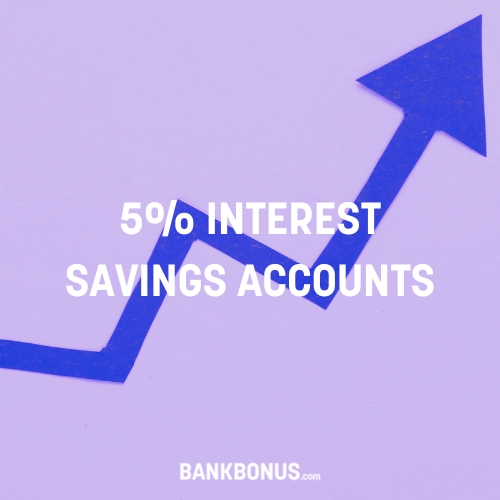Saving for retirement isn’t always the most exciting thing to do; however, setting clear retirement goals and working towards them will pay off BIG in the long run, especially if you start young. A Roth Individual Retirement Account (IRA) is a common type of investment account and one of the most popular ways to save for retirement.
In this post, I’ll cover the best brokers for Roth IRA accounts available and give you some insight into how this type of account works.
9 Best Roth IRA Accounts
Here are the top Roth IRA accounts that help you save more for retirement:
| Bank | Bonus | Expires | Requirements | |
|---|---|---|---|---|
| up to $700 | October 11, 2024 |
|
Learn More | |
| up to $5000 | July 31, 2024 |
|
Learn More | |
| up to $750 | July 31, 2024 |
|
Learn More |
1. Charles Schwab
The Charles Schwab Corporation, commonly known as Schwab, is one of the largest financial institutions in the US.
The company is best known as a brokerage firm, offering investment guidance and retirement accounts. Investors can choose from a self-directed Schwab Roth IRA, or opt for a Schwab Intelligent Portfolio, which is managed by a robo-advisor. If you’re torn between a Traditional and Roth IRA, Schwab also offers a handy conversion calculator, which estimates how much you stand to earn over time with each option.
You’ll have access to 24/7 financial advice, free online-listed equity trades, and easy access to advice from Schwab experts. You can also monitor your retirement savings growth with Schwab Mobile, though the mobile app seems to function better on iOS than Android. It has a 4.8-star (out of 5) rating in the app store and 3.8 stars (out of 5) in the Google Play Store.
Learn More:
2. Merrill Edge
Merrill Edge is Bank of America’s electronic trading platform, where you can open a brokerage account, consult with advisors, and set up a retirement plan. Merrill also offers extensive market research and guidance, so you can easily stay on top of your investments. If you already bank with BoA for your deposit accounts, Merrill makes a lot of sense for retirement savings. With one login, you can access all of your investments.
When you get started with Merrill for retirement, you can use the Merrill IRA Selector Tool, which is basically a quick online quiz that’ll help you decide which type of IRA is right for you. If you decide a Roth IRA is the way to go, you can open an account in just a few minutes. All you need is basic personal information and a way to fund your new account. If you have a BoA account, you can instantly transfer funds over.
Merrill’s standard Self-Directed Roth IRA has no trading fees and no account minimums. However, if you choose to upgrade to Merrill Guided Investing, there’s a 0.45% annual fee, and the minimum balance requirement is $1,000. You get added guidance from Merrill’s certified financial planners in exchange for the fee.
Plus, you’re in line for up to a $600 sign-up bonus when you open a new self-directed account. To qualify for the full amount, you need an allocation of $20,000 of new money in your account within 45 days after opening.
3. Vanguard
The Vanguard Group is the largest provider of mutual funds in the world. Vanguard is known for its relatively low-cost platform and claims that its mutual fund expense ratios sit 83% lower than the industry average. This means less money toward management fees and more growth in your account.
To open any Vanguard retirement account, there’s a minimum balance requirement of $1,000. From there, you can enjoy personalized guidance and a wide range of financial services.
A Vanguard Roth IRA comes with plenty of benefits but also a few small trade-offs. Like all Vanguard accounts, its Roth IRA is low-cost and provides plenty of options for different investment strategies. However, since Vanguard runs so many of its own mutual funds, you might run into some steep costs for investing outside of them.
Overall, Vanguard is a great option if you’re looking to keep costs down and want to count on an established name in investing.
4. Ally Invest
Ally is the largest online bank in the US. It doesn’t have any physical branches, but it does provide a low-cost digital banking experience. Ally Invest is its brokerage wing and offers a full-service trading platform along with Traditional and Roth IRAs.
Ally retirement accounts follow suit with its deposit products as low-fee, user-friendly options. You can easily roll an existing 401(k) or 403(b) account into an Ally IRA or start from scratch in just a few minutes. Ally offers helpful financial planning tools to help you decide if Traditional or Roth is the way to go, and it’s well-known for solid customer support along the way.
With an Ally Roth IRA, you have two options: a Robo Portfolio or a Self-Directed Portfolio. Robo Portfolios are managed by Ally’s robo-advisor, which will regularly rebalance your portfolio as needed.
To open a Robo Portfolio, there’s a minimum balance requirement of $100. There’s no minimum requirement if you prefer self-directed trading, and you can make commission-free stock, option, and ETF trades. Plus, with Ally, you benefit from a top-rated mobile platform. The mobile app currently has a 4.7-star rating in the App Store, making it one of the best-rated iOS banking apps in the business.
Learn More:
5. E*Trade
E*Trade is an online broker that’s commonly referred to as the original online trading platform. It’s remained one of the biggest names in trading over the years, mostly due to the company’s ability to adapt to a changing market. For example, E*Trade recently moved toward commission-free trading and allows investors to use dividends to purchase fractional shares, much like new online brokers.
E*Trade offers a full suite of options for retirement, including Traditional and Roth IRAs. It doesn’t charge anything for most online trades, and its Roth IRA is almost entirely fee-free. As an online broker, E*Trade offers top-tier digital tools, and its mobile app is well-liked on both iOS and Android.
Plus, you can earn a bonus of up to $3,500 when you open a new E*Trade account. You need to deposit $1.5 million within 60 days to get the full amount, but even if you only have $10,000 to start, you still get a $50 bonus. You can find the information on each tier, along with the promo code, on the E*Trade website.
6. Fidelity
Fidelity Investments is a multinational financial services company. It’s based out of Boston and consists of a brokerage firm, mutual funds, and a wealth of investment and financial planning guidance. Overall, Fidelity has one of the most expansive platforms when it comes to retirement. It offers a variety of account options, plus expert advice along with each of its products. Fidelity offers individual IRAs but also options for small business owners and children.
For Roth IRAs, Fidelity offers three different options: Fidelity Roth IRA, Fidelity Go IRA, and Fidelity Personalized Planning & Advice Roth IRA.
The Fidelity Roth IRA is its core retirement account and is a self-directed account. There are no minimums to open, and you have access to Fidelity’s tools and guidance to help you make smart investing decisions. There are no advisory fees, and most trades (aside from options trades) are commission-free.
With Fidelity Go, you can put your retirement savings on autopilot. All you have to do is set your preferred risk tolerance, and Fidelity takes care of the rest. There’s no minimum balance requirement, but you pay a $3 monthly fee for a balance of $10,000 to $49,999 and 0.35% if you’re above $50,000.
Fidelity Personalized Planning & Advice takes it a step further. It’s still more of a hands-off account, but you also get 1-on-1 consulting with a Fidelity expert assigned to your account. There’s a $25,000 minimum balance requirement, and you pay a 0.50% annual fee for the elevated service.
7. SoFi
Sofi, which is short for Social Finance, was founded in 2011. It’s an online-only financial services platform and offers bank accounts, loans, student loan refinancing, investing, and retirement accounts.
SoFi offers both active and automated Traditional, Roth, and SEP IRAs. When you open an account, Sofi helps you set your goals and develop the best plan for you. You’ll build your IRA based on risk tolerance and diversified investments, and you can talk with a SoFi financial planner at any time for free. You can open your Sofi IRA online in as little as five minutes.
Learn More:
8. Betterment
Betterment is a financial advisory company that offers both digital investing and cash management services. It was founded in 2008 and has more than 700,000 members.
Betterment is effectively an all-in-one digital finance platform. It doesn’t charge trading commissions, and all of its features come at a single annual rate. Its main focus is investing, but it also offers deposit accounts and retirement accounts. The platform aims to serve everyone despite their financial status and provides tools whether you have a few dollars or a few million.
For retirement savings, Betterment offers a lot more than just an account. Rather than just depositing some cash and leaving it there, Betterment helps you to set up a plan that makes the most sense for you. This starts with figuring out exactly how much you’ll need to put away when the time comes.
From there, Betterment constructs a plan for you. This includes how much you need to put away each month, what you should be prioritizing, and any adjustments you need to make along the way.
Betterment’s Roth IRA is a low-fee option with a set 0.25% advisory fee and nothing else. All of Betterment’s automated tools are included, and you can choose from several different portfolios to start with. For example, if you’re interested in socially responsible investing, Betterment has a plan for you.
9. Wealthfront
Wealthfront is a digital automated investing platform. Founded in 2008, the company handles more than $21 billion in investments across nearly half a million accounts. Wealthfront is similar to Betterment in its approach. It aims to be a one-stop-shop for all of your financial needs, and with a single login, you have a brokerage account, retirement account, cash management account, and access to a line of credit.
Also, like Betterment, Wealthfront focuses on automation but allows you to customize your portfolio however you like. It offers hundreds of different categories for retirement savings, including crypto, social responsibility, and cannabis. You’ll also choose the level of risk you want to take, and you can always adjust your account as needed.
Wealthfront charges a 0.25% annual advisory fee for all of your connected accounts. Otherwise, the platform is almost entirely fee-free.
Learn More:
What is a Roth IRA Account?
Along with Traditional IRAs, a Roth IRA is one of the most common types of retirement accounts and is widely available through all major brokerage firms. Still, a Roth IRA is not a brokerage account. Its sole purpose is to build your retirement savings, and you cannot use it for day trading or short-term investing.
You can fund your account through a rollover from an existing retirement account or contribute cash from a deposit account. When you deposit funds into a Roth IRA, they are distributed across various investments, similar to a mutual fund.
These investments could include stocks, bonds, ETFs, CDs, money market funds, and cryptocurrency. Depending on the specific account, you can either tailor these investments on your own, or allow someone else to manage them.
Roth IRA vs Traditional IRA
The main difference between a Roth IRA and a Traditional IRA is how each account handles income taxes. You pay tax no matter where you house your retirement savings, but the accounts differ when it comes to when you pay them.
With a Traditional IRA, you pay tax on the funds in your account when you access them at retirement. With a Roth IRA, you pay the IRS upfront, so all of the money in the account is yours (tax-free) once you qualify to withdraw it.
Some of this comes down to personal preference but also provides the opportunity for tax-advantaged investing. For example, if you expect your marginal taxes to be higher when you retire than they are currently, a Roth IRA makes a lot of sense.
In general, a Roth IRA is considered a more flexible retirement account option. Along with the tax structure, these accounts also avoid required minimum distributions (RMDs). This means that there’s no set timeline for when all the money must be drawn from the account.
If you withdraw funds before retirement, you’ll run into early withdrawal penalties. With this in mind, you should always consider the money in a retirement account off-limits, aside from emergencies where you have no other choice.
How Do Roth IRA Accounts Work?
If you’re a beginner when it comes to saving for retirement, that’s okay. Retirement accounts are fairly easy to understand, but there are certain things that you need to know before opening one.
The first step is to understand the wide range of investment options at your disposal with a Roth IRA. These accounts are designed to encourage steady growth over time, so your money in the account is spread out between multiple investments. This is called diversification.
It’s also important to note that every Roth IRA comes with annual contribution limits. This means that you can only contribute a certain amount to the account each year. At the moment, the limit for a Roth IRA is $7,000 per year if you’re under 50 and $8,000 per year if you are 50 or older.
Roth IRAs also have income limits. These limits are based on your Modified Adjusted Gross Income (MAGI) and restrict high earners from contributing to a Roth IRA. These limits are fluid and adjust every year.
Frequently Asked Questions
What is the five-year rule for a Roth IRA?
The 5-year rule for a Roth IRA establishes when you can withdraw funds from your account penalty-free. As mentioned above, you’ll face penalties if you withdraw funds prior to retirement (or turning 59 1/2). However, you’re also subject to penalties if your account is less than five years old, even if you meet the age requirement.
The 5-year rule also comes into play for first-time home buyers. If your account is at least five years old, you can use up to $10,000 (penalty-free) from your Roth IRA toward a piece of real estate.
Which financial institution has the best Roth IRA?
Which Roth IRA provider is the best depends. As you decide where to open your account, consider cost and reputation. You never want to shave off a big portion of your savings toward fees, but you should also house your nest egg with a trustworthy institution.
Overall, each one of the companies listed above make the cut. So, as you decide where to open a retirement account, focus on finding the company that you think best aligns with your investing style. You also want to consider how much customer support you need.
What is the downside of a Roth IRA?
The main downside is that you have to pay tax dollars upfront on your deposits. This can be tricky if you don’t have a lot of spare cash on hand. The other downside is that Roth IRAs can be limiting for high-earning individuals. If you earn a high salary, it probably isn’t the right option for you.
Which Roth IRA account is best for you?
No matter what your financial goals are and how close you are to reaching them, retirement is something that you should be thinking about. Even if you have a lot of time between now and then, every step you take toward building for your future will pay off down the line (and it’ll come up faster than you think!).
Fortunately, even if you have limited experience with the stock market, there’s a Roth IRA that you can handle. From beginner-friendly accounts to full-service automated options, saving for your future has never been easier.
Before you decide which account to open, take the time to do some of your own research, and don’t be afraid to consult with an independent financial planner. Personal finance doesn’t have to be a solo venture, and you’ll set yourself up for success by enlisting some help. You’ve already taken the first step by reading this article. Now that you’re thinking about the best place to save for your retirement, you’re already ahead of the game.
From here, it’s as simple as making a plan and sticking to it — your future self will thank you for it.





Comments are closed.
Comments are closed here.